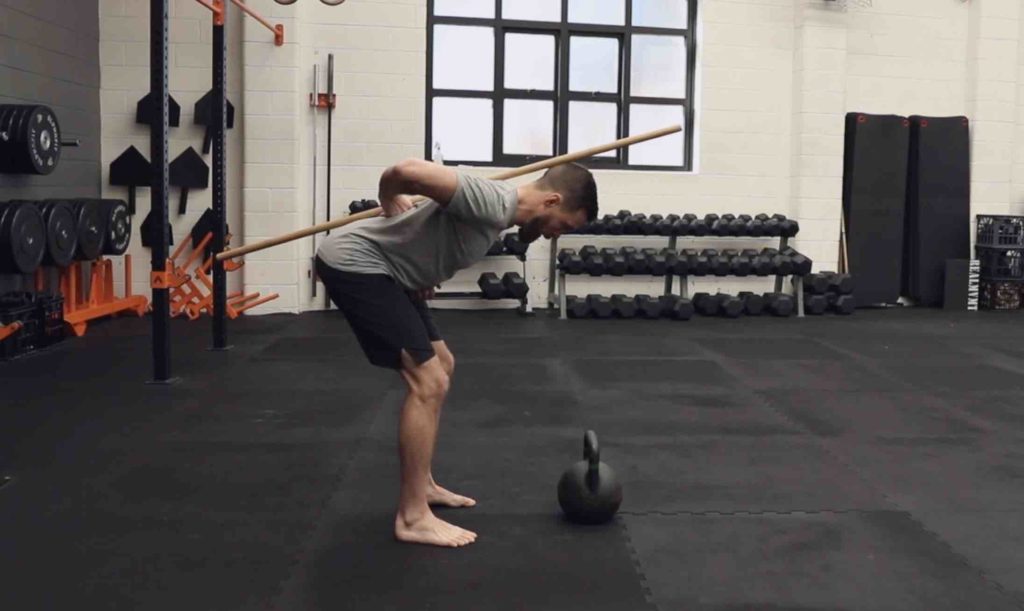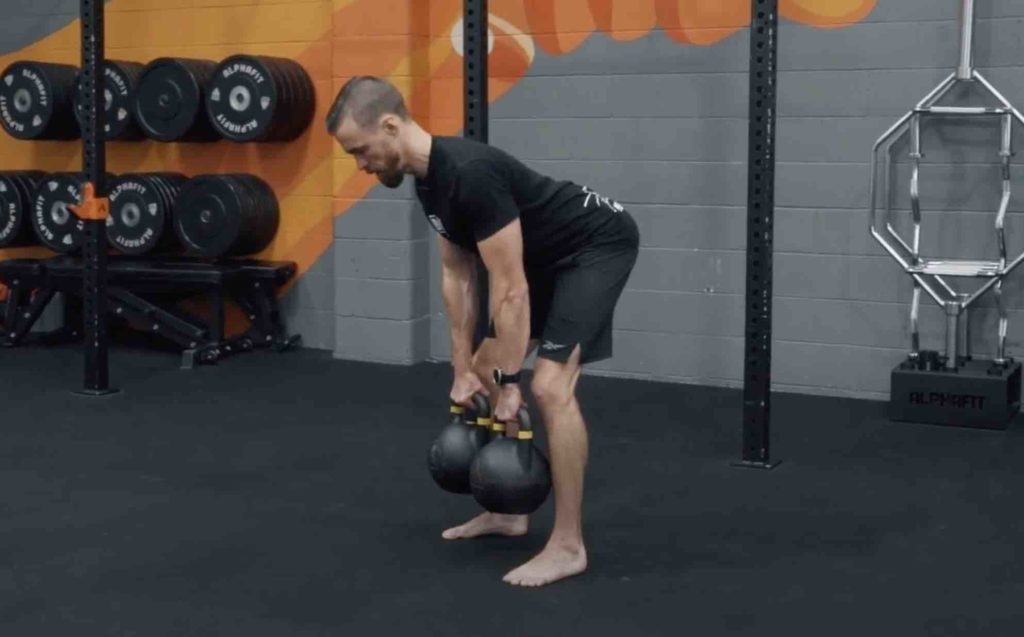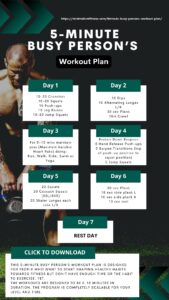A common question I get asked is, RDL vs deadlift? Whether you’re new to training or an experienced lifter these exercises offer multiple benefits and are perfect for the fitness minimalist or seasoned gym goer.
What Does RDL Stand For?
RDL stands for Romanian Deadlift. The Romanian deadlift is a great exercise for everyone to master. This RDL teaches and reinforces good hip hinge patterning, which is needed for exercises like full deadlifts and kettlebell swings. In addition, the RDL can be used in many different variations to target stability and your posterior chain.

Correct RDL form also has you stop just below your knees before returning to the top position. This is why it is so useful for beginners or someone who struggles with lower back pain as it allows you to pick the weight up from an elevated position instead of the floor.

Proper deadlift form has you picking the weight up from the floor. Usually, the barbell or kettlebell will be roughly mid-shin height which will challenge the posterior chain if you struggle to get the full range of motion in the hinge pattern.
How To Do RDL With Kettlebell
- Stand tall, feet shoulder-width apart.
- Hold a kettlebell in front of your thighs.
- Push hips back, as if sitting.
- Lower kettlebell towards floor, keeping back straight.
- Stop when you feel a stretch in your hamstrings.
- Drive through heels to lift kettlebell back up.
- Repeat.

RDL vs Deadlift
The correct RDL form requires a shorter range of motion than the barbell deadlift. Whether or not you’re using kettlebells or a barbell you will still need to maintain your hip hinge pattern throughout the movement in order to avoid injury.
Are RDL’s as effective as deadlifts?
If used in the right context, yes. RDL’s offer some different benefits to the traditional deadlift, such as limiting range of motion and reducing the potential for injury if you are new to the movement or recovering from an injury.
The best part is, you may not even need to choose between RDL vs deadlift as both exercises can and should easily fit into a well-rounded program.
Should you lift heavy with RDL’s?
Another benefit of the RDL is that you can lift heavy. Powerlifters and seasoned lifters often use the RDL to break through sticking points or plateaus in their lifts.
Benefits Of The RDL
Proper RDL form has numerous benefits. Depending on your level of experience these can include:
- Better trunk or core stability
- Improves hip extension and posture
- Develops your hip hinge pattern
- Strengthens your posterior chain
Benefits Of The Deadlift
Although the deadlift has similar benefits to the RDL, here are some that you may have not thought about:
- Full range of motion in the hip hinge movement
- By going full ROM, you reduce your risk of injury if you maintain proper deadlift form
If you’re a busy professional or someone who spends a lot of hours on the computer or at the desk, maintaining proper deadlift form is usually the pattern or skill people struggle with the most when it comes to the fundamental movements or squat, hinge, push, pull and loaded carry.
So be sure to build slowly and prioritise form over load.
Get Fit in 5 Minutes

Too Busy to Work Out?
In 5 minutes a day, you’ll create an easy-to-follow workout habit that fits your busy schedule.
Why Sitting Is Bad For Your Posterior Chain
If you work at a desk or spend a lot of time sitting and you struggle with the RDL or deadlifts it might be because:
- Sitting shortens your hip flexors which can cause lower back pain and tight hips
- Sitting compresses your diaphragm and reduces your ability to stabilise your trunk
- Your posture is also affected by being in too much forward flexion
- Hamstrings and glutes switch off from not being used.
The RDL Muscles Worked
When we’re talking about the muscles worked in the Romanian deadlift or any deadlift for that matter it’s all about the posterior chain. This includes your back, glutes and hamstrings.
How Heavy Should RDLs Be?
The answer is, whatever you can maintain perfect form with. By adding too much weight too soon you will run the risk of injury. Take your time when adding extra weight to the movement. By following the process below, you will be able to avoid injuries.
Are Kettlebells Good For Romanian Deadlifts?
Put simply, yes! Kettlebell deadlifts are a great addition to the traditional barbell RDL because they allow you to focus on subtle details of your hip hinge movement you don’t get when you use a barbell. Kettlebell deadlifts for beginners are great so that you can load gradually and increase the weight as you feel comfortable.
Alternative Exercises To RDL And Deadlifts
Nordic Curls
Nordic hamstring curls isolate your hamstrings by leveraging your own body weight and gravity. If you’ve ever tried them you will understand when people say that they are one of the hardest exercises you can ever learn.
Related Posts:
How To Improve Your RDL And Deadlift
We mentioned some common problems from sitting that may affect your posterior chain and hip range of motion. Here are some high-impact mobility, range of motion and stability-based stretches and exercises that will help improve your hip hinge movement:
Step #1 – Mobilise Your Posterior Chain
Starting with elements such as trigger point therapy for the lower back and hips we then can use mobility exercises such as:
- Strap stretches
- Neural flossing and;
- Hip extension exercises like the couch stretch.
This will allow you to gain the required posterior chain mobility in order to maintain proper rdl, deadlift and kettlebell deadlift form. Here’s a complete video tutorial:
Step #2 – Stabilise Your Hip Hinge Pattern & Deadlift
Exercises such as the plank and hip hinge patterning with a dowel are effective and low/no equipment options that reinforce all of those gains in mobility but you can also use the following exercises to help improve stability:
- Hip bridges like the straight leg and elevated hip bridge and;
- Loaded carries like the farmers carry
Related Posts:
Step #3 – How to RDL properly? Try the single leg RDL
Once we have the required mobility and stability for proper RDL form it now comes down to correct exercise selection for the deadlift. Rushing straight back to heavy barbell deadlifts might not be the best method instead, focus on movements that challenge trunk and single leg stability in your hinge pattern like:
- Single Leg RDL
- B-Stance Deadlifts
- Kettlebell Sumo Deadlift
- Suitcase deadlift
- Double kettlebell Romanian deadlift
This allows you to isolate asymmetries and correct them before adding the conventional deadlift into the mix. Choosing deadlift varieties like sumo deadlifts also allow you to keep your spine in a more upright position which will allow you to protect your lower back even more.
Pass through the gates with flying colours? You’ve most likely earned proper kettlebell deadlift form and you’re ready to get back to loading the movement but be sure to start small and increase load only when your technique allows.
Related Posts:
- How To Master Proper Kettlebell Swing Form With These 6 Steps
- Relieve Lower Back Pain
- 11 Essential Trigger Point Releases
Can Heavy Kettlebell Swings Replace Deadlifts?
Once you’ve mastered the kettlebell deadlift, there’s nothing stopping you from moving to the kettlebell swing. Remember to take your time to master the kettlebell swing.
Here’s a full workout that puts everything you’ve just learned together:
Kettlebell RDL Workout Routine
Complete the sequence below for 2-3 rounds. Use as little rest as possible and add more rounds if required:
- 10 Kettlebell Leg Lower e/s
- 60sec Couch Stretch e/s
- 15 Elevated Hip Bridge e/s
Then;
You can swap nordic hamstring curls for hamstring slides and variations for the kettlebell deadlift can be single-leg and asymmetrical options.